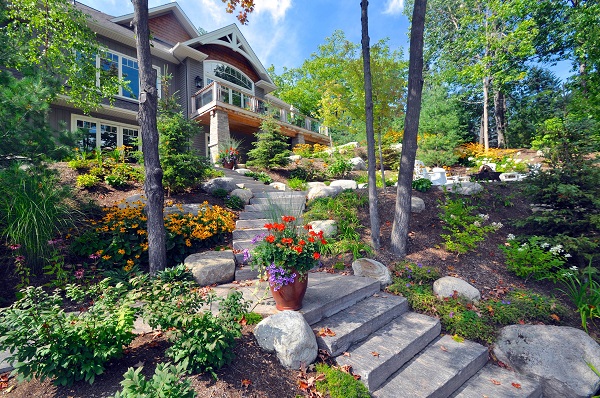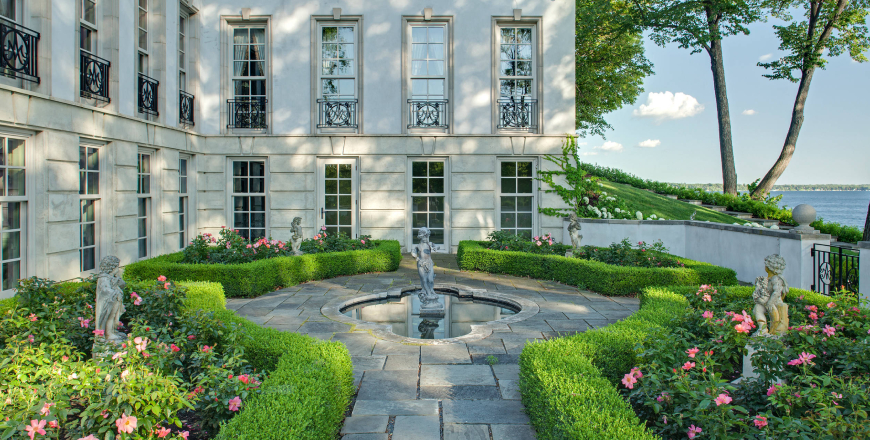Why Is Landscaping Necessary For Designing A Garden?
If you live in a classic, large-structured home, a beautiful garden can indeed enhance the beauty of your house. Before you jump into designing a garden, there are certain things that you need to understand first. Like any other design, the garden design also has a set of landscape design principles to be followed if you want a beautiful residential garden. It does not matter if you are an amateur or a professional who has a degree in landscape designing from a fine arts college in Chennai; following these principles can provide satisfying and beautiful garden design.
Landscape Design Principles For Gardens
Here are the thumb rules for designing a satisfying garden.
1. Adhere To The Law Of Significant Enclosure
This principle addresses the real concept of the garden- that is, enclosure. An enclosure is necessary for building a sense of refuge, and it allows embracing the beauty of nature. The law of significant enclosure points out the fact that we get the feeling of the enclosure when the space’s vertical edge has one-third length of the horizontal dimension. Such a law could be derived from behavioral psychology, where the sense of security and safety is thoroughly explained.
2. Following The Regulating Line
The regulating line concept is taught in the design colleges in Chennai. This concept is that the element of architecture such as building edge, doorways, windows, etc or distinctive landscape features like existing pool, prominent tree, property boundary, etc., can produce imaginary lines that connect and organize the designs.
3. For Perfect Proportions, Use Golden Rectangle
There are certain rules and principles that help us in redefining the rules. One such rule is the Golden ratio. Numerically, 1:1.6 is the Golden Rectangle Ratio used to layout patios, lawns, terraces, and arbors. This ratio of proportion is observed in almost every historical architecture, be it the Great Pyramids Of Giza or the Greek Parthenon. Throughout history, this golden ratio is used as a guide to having a sense of order and balance. In modern landscape designing, the golden ratio includes the golden rectangle, where the ratio of the shorter side to the longer side must be equivalent to the ratio of the longer side to the total of longer and shorter sides.

4. The Rule For Step Design
Thomas D. Church, known for creating the California style, advocated for the rule for step design. As per Church, double of the riser’s height, when added to the tread, must equal 26 inches. For example, if 5 inches is the height of the riser, then the tread must be 16 inches.
5. Size Matters
Another big rule related to space is to Go Big. If you are in a dilemma to decide whether you want a narrow staircase or a wider one, a short swimming pool or a longer one, a higher pergola or a lower one, the solution is to always go for big ones.
6. Plant Big First
A successful planting enhances the beauty of a garden. While planting, start with trees, then slowly move to shrubs, and then to ground cover. Adhering to this routine is important in a compositional way and in a complete practical sense. Setting up a huge tree sometimes requires types of machinery or various gardeners, huge space for stationing and manoeuvring amendments, and soils that would be disheartening to undo the newly planted bed. Even if you are tempted to plant perennials before the shrubs and trees, you must resist the temptation.
7. Remember The Above Steps
One of the important rules in designing a landscape for the garden is to plant a 1- cent plant in a $10 hole, rather than doing it the other way around. It doesn’t matter if you have a pretty good landscape design for the garden; if you cannot plant the plants at the right height, size, and properly amended pit, you cannot yield good results.
Designing a garden landscape might not be an easy job if you do not have any experience. However, if you adhere to all these principles and follow them, you can make your garden attractive. Continue Reading


